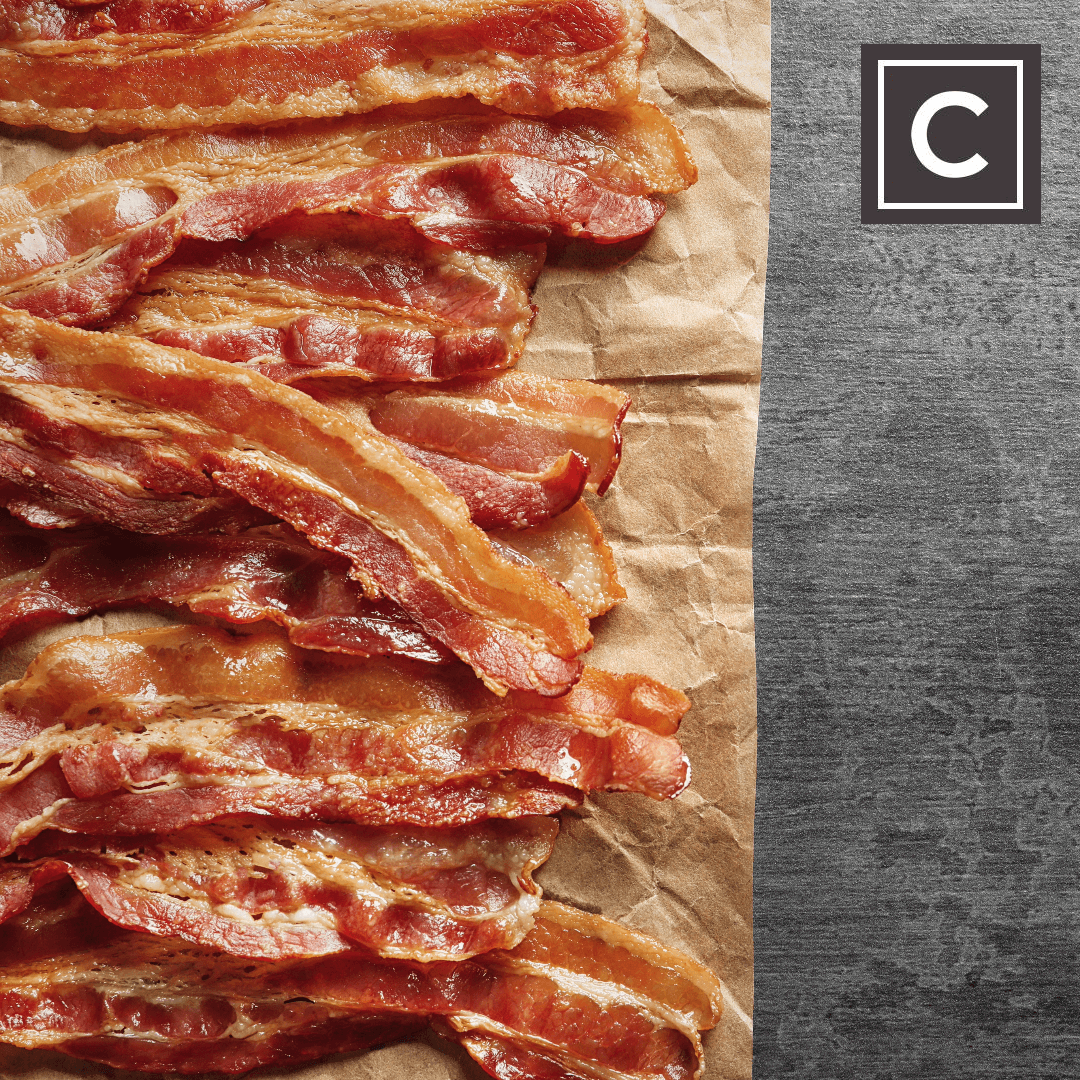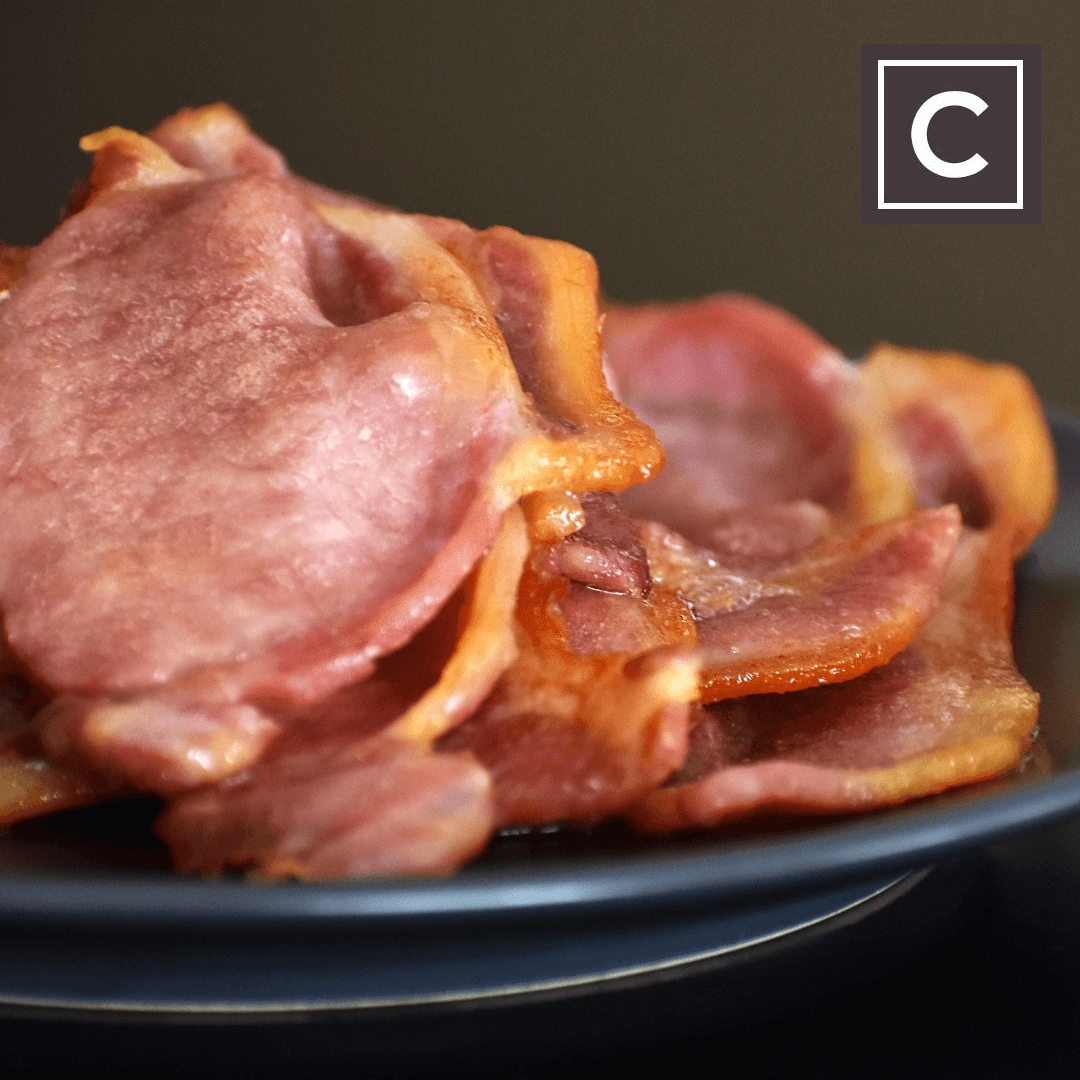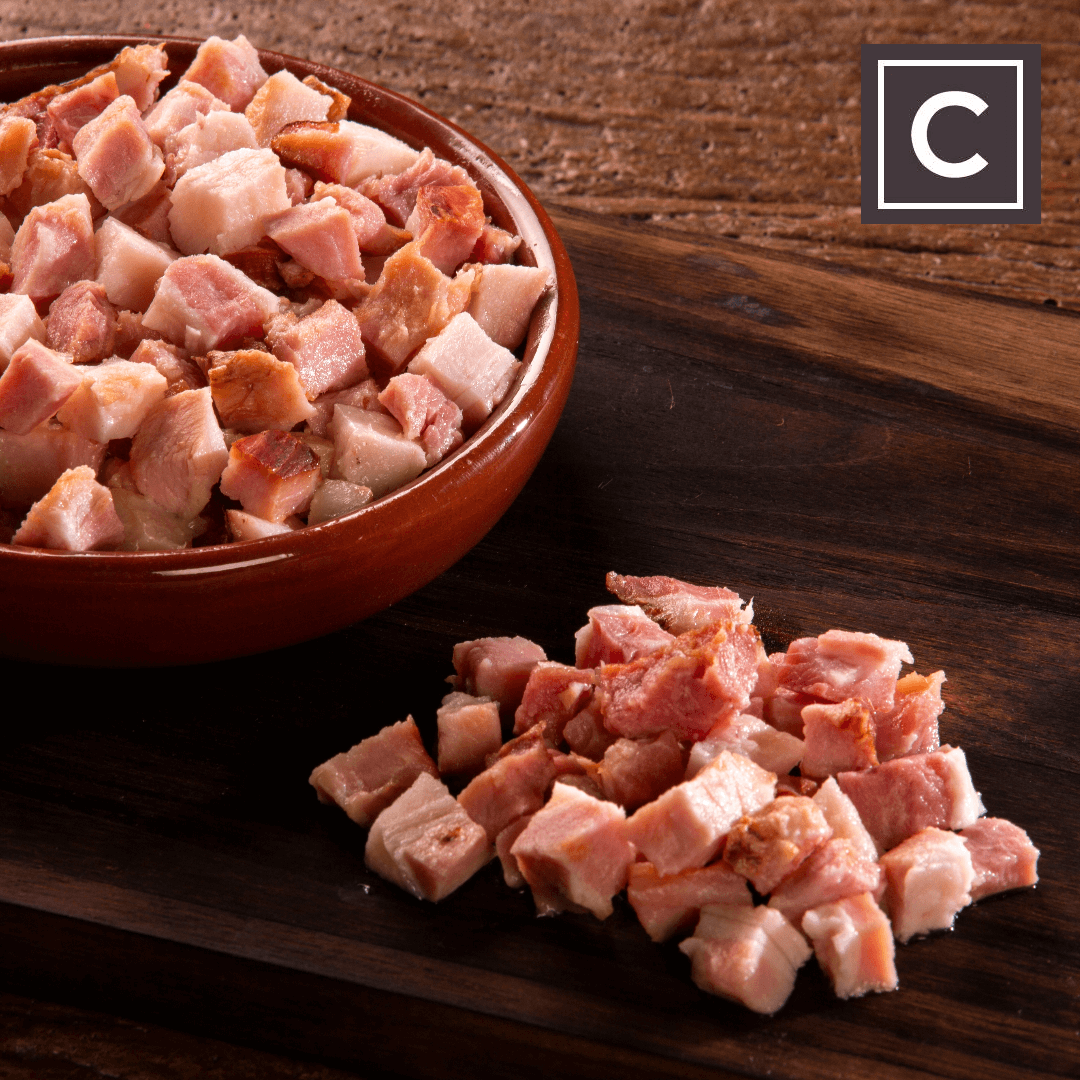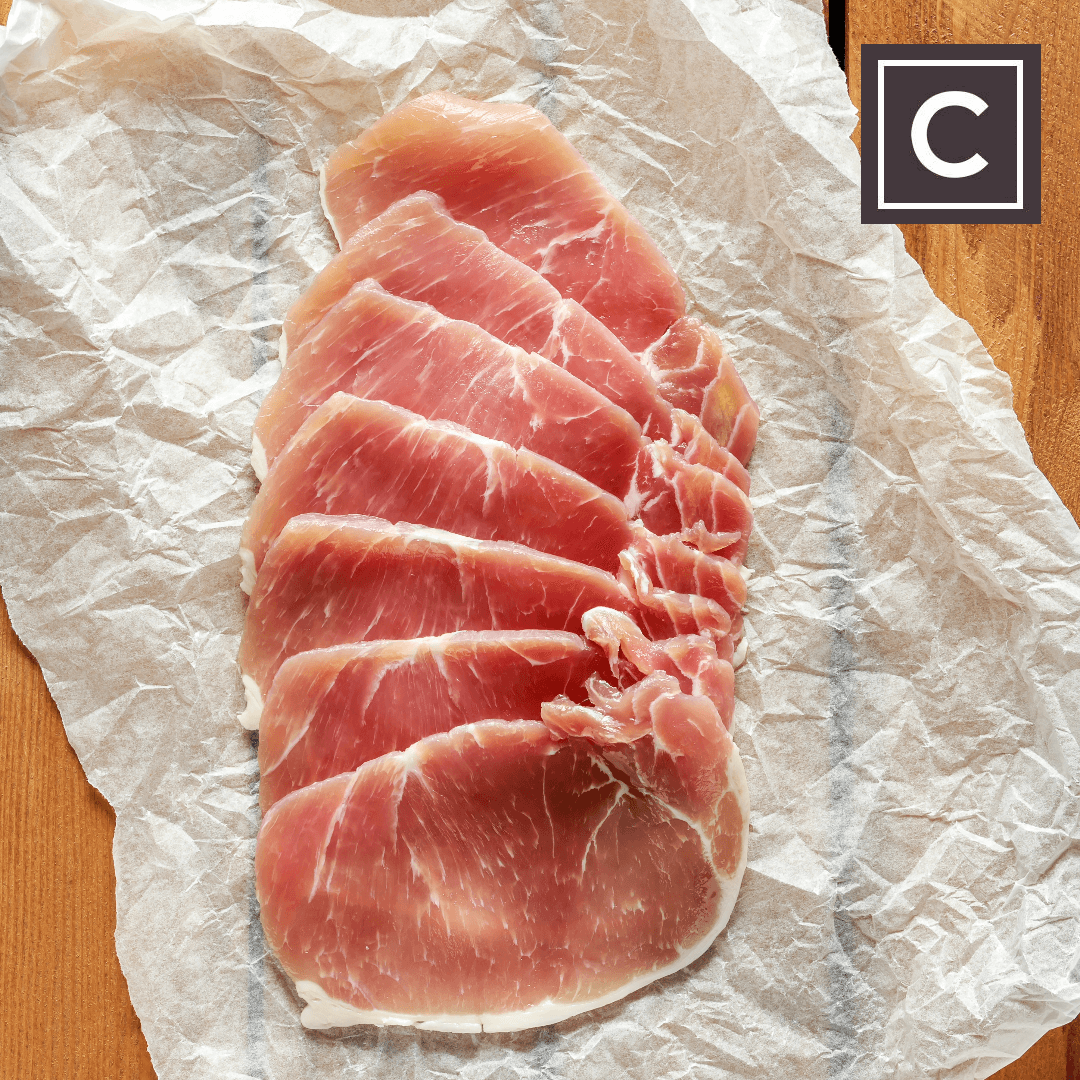Ingredient Glossary: Bacon
Posted by Emily on 1st Dec 2019 Reading Time:
Etymology
The term "bacon" traces its origins back to the early 14th century, describing meat taken from the back and sides of a pig. This meat could be fresh or cured, although it was particularly associated with the cured variety. The word itself is derived from the Old French ''Bacon,'' which has its roots in Proto-Germanic'*bakkon,'' meaning ""back meat."" This Proto-Germanic term is also linked to Old High German' bahho'' and Old Dutch ''baken,'' both of which refer to Bacon. These terms, in turn, have a common origin with the English word ''back.''

By 1906, the idiomatic expression "bring home the bacon" was recorded. Initially, this phrase began in the jargon of boxing, signifying the act of winning, which ensured material provision and supported a certain standard of living. Historically, Bacon was considered an essential staple meat, particularly for working-class and rural communities. In the works of Shakespeare, for example, ''bacon'' is used disparagingly to denote a "rustic" or country-dweller.
What is Bacon
Bacon is available in both smoked and unsmoked variants. Unsmoked Bacon, also known as ''green,'' has a paler and milder flavour than the smoked version. Bacon rashers come in three primary types: back (from the loin and the leanest), streaky (from the belly and usually the fattiest), and middle (a combination of back and streaky). Additionally, bacon joints such as the collar (shoulder), hock (front leg), and gammon (hind leg) are also popular. It's essential to note that Bacon should never be consumed raw.
What types of Bacon are there?
Back Bacon
Back Bacon is by far and away our most popular cut of Bacon in the U.K. These are the rashers you'll be having on your local cafe breakfasts and sandwiches. It's produced from pork loin, is usually very lean, particularly the eye of the loin, and is shaped almost like an apostrophe.

Bacon Medallions
Bacon medallions are produced from cured pork loin, with everything other than the eye of the bacon loin trimmed off. It leaves you with a lean, circular rasher, which can have up to 30% less fat than a normal rasher of Bacon, making bacon medallions very low in fat.
Bacon Chops
Bacon chops, sometimes called bacon steaks, are thick-cut chops taken from whole bacon loins. In other words, a bacon chop is a super thick cut rasher of Bacon. It comes from the same place and is produced the same way as the back Bacon you put on your sandwich; it's just, well, thicker.
Streaky Bacon
Unlike back bacon, which is made using pork loin, streaky Bacon is made using pork belly. This is the Bacon you wrap around your sausages to make pig's in blankets. Streaky Bacon carries a fair bit of fat and is shaped like a ruler, often called bacon strips. It is often regarded as the bacon enthusiast's Bacon of choice.
Middle Bacon
Middle Bacon is an old-fashioned variety of Bacon, which is still popular with the more traditional amongst our customers. It combines both the loin and the belly (i.e. back Bacon and streaky Bacon) in one rasher and, unusually for this day and age, is served with the rind left on.
American Bacon
Unlike here in the U.K., where streaky Bacon is less popular than back Bacon, almost all Bacon sold in America is streaky Bacon. It's so popular they don't bother to call it streaky; they call it Bacon. The only subtle difference may be the ingredients used in the curing process, as lots of American Bacon will have added sugar in the cure. They like their Bacon a little sweeter.
Lardons
Lardons are small cubes of diced Bacon, often produced using pork belly, but other similarly fatty parts of the animal may be used. Lardons are naturally more fatty; as the name suggests, they are served with ''the lard on''. They bring an authentic luxurious flavour, mainly due to the higher fat content, and are perfect for frying and using in recipes or serving hot in salad or salad dressings.

How is Bacon cured?
As outlined above, Bacon comes in many different shapes and sizes, and as there are different types of Bacon, there are also other ways to produce Bacon. The four main curing types include dry curing, wet curing, maple curing, and sweet curing.
Dry Cured
Selected cuts of pork are rubbed with a dry salt mix and left to cure for up to one week. Cuts are turned daily to produce an even cure and are often air-dried for up to one week after being fully cured. Dry curing removes water, meaning the final bacon product will shrink far less during cooking, and you won't get any of those ''white bits'' left in the pan.
Wet Cured
Sometimes referred to as Wiltshire cure, wet-cured Bacon is produced by injecting or soaking the pork in brine. Once injected or left to soak, the pork will take 2-3 days to cure fully. This curing process will enable the pork to retain its moisture content or even take more on (in the case of injecting), giving you a wetter bacon, hence the name.
Maple Cured
Maple syrup is added to either a dry or wet cure.
Sweet Cured
Sugars, such as muscovado, demerara or even molasses, are added to a dry or wet cure.
Selecting the Best Bacon
Quality bacon should appear pink and moist. Avoid any that looks discoloured or dry. The fat should be white or creamy, not yellow or greasy, and the rind should be thin and elastic. Steer clear of Bacon that is wet, slimy, or has an off-putting smell. If you're concerned about animal welfare, consider learning more about organic and free-range options. The Soil Association and the Food Standards Agency provide valuable information about this and food labelling, respectively.
Preparing Bacon
For bacon joints, you can either boil or roast them. Boiling requires 20 minutes per 500g, plus an additional 20 minutes. Roasting takes 30 minutes per 500g, with an extra 30 minutes. Let the meat rest for 15-20 minutes before serving. Rashers should be grilled or fried for 2-3 minutes per side, with a longer cooking time for a crispier result.
Cooking Streaky Bacon in Water
To cook Streaky Bacon in water, add just enough water to cover the strips completely, then cook over high heat until the water starts to boil. Next, lower the temperature to medium and wait for the liquid to evaporate completely. Finally, brown the Bacon on low heat until it reaches the desired crispiness - the result: a crunchy bite that has retained its moisture and won't crumble on your plate.

Storing Bacon
Keep Bacon refrigerated and separate from food that is consumed raw. Adhere to the consume-by date printed on the packaging. Open the packet only when ready to use the Bacon, storing any leftovers in cling film or a sealed plastic container. Good quality loose bacon should be wrapped in greaseproof paper; unsmoked varieties last for seven days, while smoked can be kept for ten days. Bacon joints last about three days in the fridge. Vacuum-packed Bacon can be frozen for up to two months.
Cooking Ideas
Back bacon rashers are perfect for a traditional English breakfast, whereas streaky rashers are ideal for a BLT sandwich or wrapping around lean meats or fish before roasting. They also make a delicious addition to creamy pasta dishes like spaghetti carbonara. Use shredded or diced hock in split pea soups or casseroles. Why not try our Smokey & Sweet Tomato-Bacon Relish or Punchy Bacon & Blue Cheese Sauce recipes? Your customers will thank you.
Availability
Bacon is available throughout the year.
Alternatives to Bacon
If you're looking for a substitute, consider pancetta or ham.

